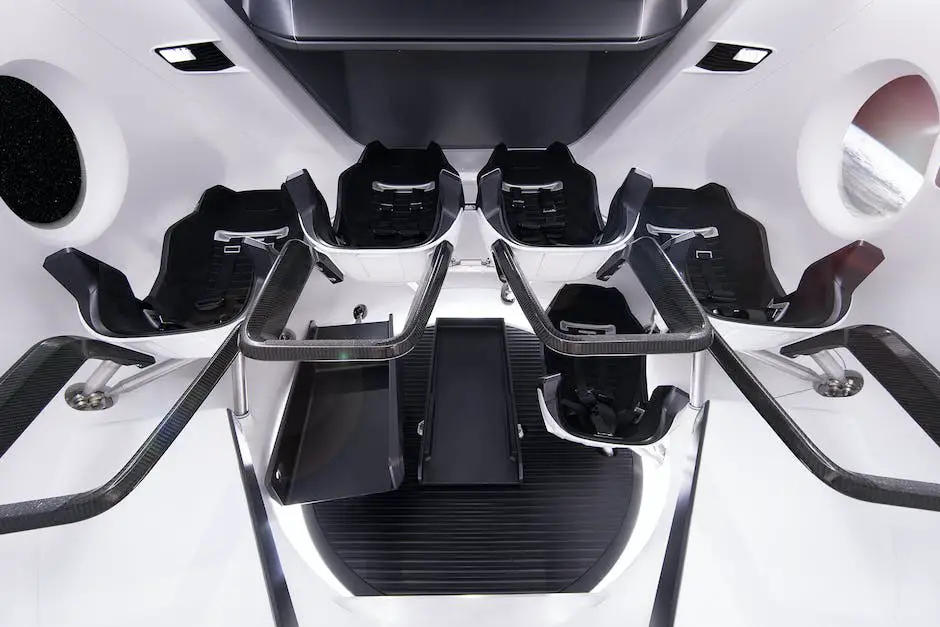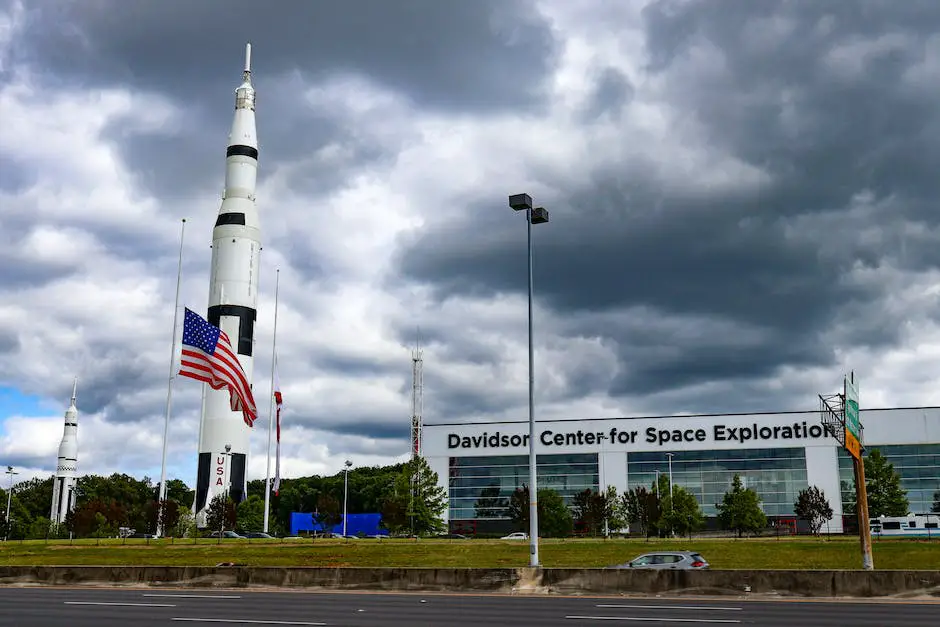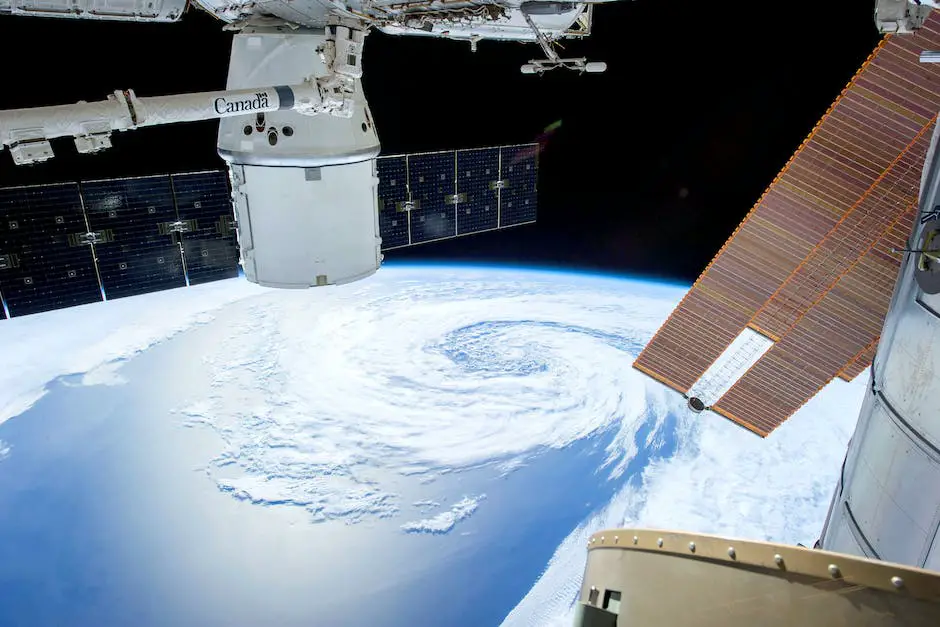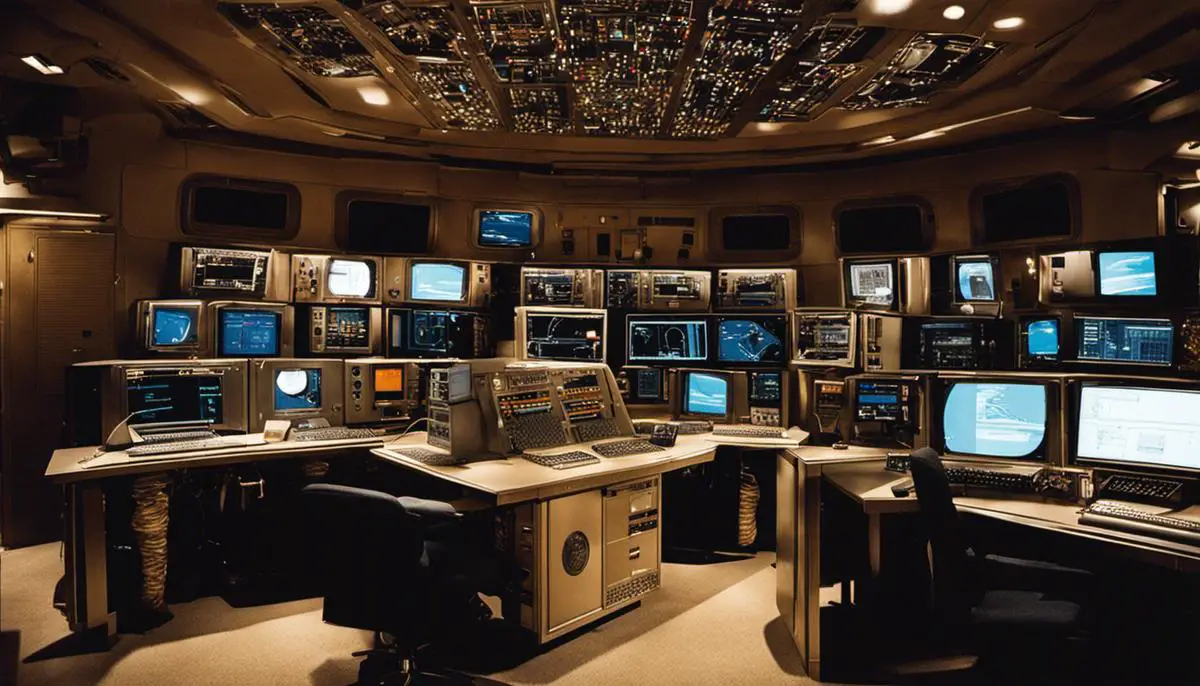The Apollo missions, orchestrated by NASA during the 1960s and early 1970s, were a pioneering endeavor in space exploration that required monumental technological advancements. The challenges presented by the Apollo missions, be they pertaining to computing technology, communication, life support, propulsion, or spacecraft design, stimulated unprecedented innovation. Addressing these hurdles not only necessitated an immense depth of scientific knowledge but an extraordinary amount of creativity and adaptability. Immaculate planning, groundbreaking research, and tireless effort were integral to overcoming these challenges, which in turn, set the foundation for modern space exploration technologies.
Contents
Computer Systems and Software Development
Computing Power of the 60s
In the era of the Apollo missions, the computing power was starkly limited compared to today. The Apollo Guidance Computer (AGC), the on-board computer system of the Apollo spacecrafts, was rudimentary at best when compared to modern standards. With just 2K of RAM and 36K of hard drive space, and with processing power the fraction of a basic modern calculator, the AGC reflects the nascent state of computer technology during the 1960s. Even the most mundane devices today, such as a toaster or a thermostat, would exceed the AGC’s capabilities.
The software designed to utilize the AGC, known as the Apollo Navigation and Guidance Software, was riddled with complexities and challenges. It was the first of its kind; a real-time, multitasking, priority-scheduled software system. Engineers had to deal with significant constraints around the available memory, both for storage and processing. For example, the code was so tightly packed that adding anything more would risk exceeding the memory limit, which could possibly lead to the disaster.
Overcoming the Limitations
These constraints demanded creative optimization techniques. Each line of code had to be extremely efficient, and unnecessary functions were ruthlessly eliminated. Some challenges were met with innovative mechanical solutions, like the display-and-keyboard unit (DSKY). The DSKY was a user interface located in both the Lunar Module and the Command Module. It allowed astronauts to input commands into the AGC using numeric codes.
In an era when software error detection was practically unheard of, a system needed to be in place for the Apollo Program. This was urgently realized during the mission of Apollo 11 when an unexpected alarm went off. Basically, the system was being asked to process more tasks than it could handle at once. Upon receiving this alarm, the system rebooted and, importantly, remembered the critical tasks thanks to ‘restart protection’ logic built into the software.
Reliability and Redundancy
A standout characteristic of the AGC was its extreme reliability. Despite the constrained resources and technical challenges, there would be little to no room for error during the missions. This drove the development and implementation of triple-modular redundancy, where three identical systems, operating in synchronization, provided a safety buffer. Even if one system failed, the remaining two would keep functioning, providing crucial backup support.
The landmark Apollo missions, aside from their historical importance, also revolutionized real-time computing with the development of an innovative navigation and guidance system. Operating under considerable constraints, this system’s success underscored how the implementation of intelligent methodologies could surmount substantial technical obstacles. Remarkably, even though this system predates the digital revolution by several decades, it dealt effectively with issues that have since become common considerations in computing, such as multitasking, error detection and management, code efficacy, and crafting dependable user interfaces.

Overcoming Lunar Complexities
The Apollo mission’s navigation was among its significant challenges due to the moon’s uneven surface peppered with millions of craters and expansive lunar plains. This rendered terrestrial landmarks unreliable for astronauts. Terrestrial navigation techniques, including compasses or celestial navigation, were unfeasible due to the lack of an atmospheric or magnetic field on the moon. NASA rose to the challenge by applying a mix of earth-based tracking, onboard inertial guidance systems, and star sightings to accurately locate the Apollo spacecraft.
The spacecraft relied heavily on an inertial guidance system, a navigation aid powered by gyroscopes. This system demanded consistent updates with precise spatial orientation data. These updates were carried out through gathering data from a two-star sighting performed by the astronauts. This data was then entered into the Apollo guidance computer to calibrate the spacecraft’s trajectory effectively.
Crafting a Global Umbrella
To keep a continuous track on the Apollo spacecraft’s precise location and control its course corrections, a grand scheme of ground-based tracking networks was established. Named the Manned Space Flight Network (MSFN), this system involved 30 ground stations scattered across the world – from the highlands of Spain to the coral reefs of Australia.
These ground stations, forming a global coverage umbrella, could receive the spacecraft’s radio signals as the earth rotated. The slight changes in radio frequency due to the Doppler effect were used to calculate the spacecraft’s speed and distance from Earth. However, processing these frequency shifts and transforming them into accurate location data was a herculean task, requiring complex mathematics and massive computers.
Battling Latency and Quality
Direct communication with astronauts orbiting the moon proved to be a considerable challenge, given the large distance from Earth. Radio signals take about 1.3 seconds to travel to the moon and back, which caused measurable communication latency. This lag posed significant concerns when remote controlling the lunar module or relaying urgent instructions.
NASA managed to overcome these impediments by developing a Unified S-Band (USB) system, which combined telemetry, voice, television, and command data into a single antenna. The ground stations of the MSFN were equipped with large 85-foot diameter antennas to efficiently receive these weak radio signals. Consequently, the feedback from the Apollo missions was received almost in real-time, with only a minimal 0.401-second round trip delay.
The quality of transmitted audio and video was another primary concern. To remain within the limited bandwidth, the television signal from the Apollo missions was transmitted in slow-scan format, resulting in lower quality and a slower frame rate. NASA compensated for these shortcomings by developing conversion equipment that worked in conjunction with commercial television technology. The success of these adaptations and adjustments was evident when millions of viewers watched live broadcasts of astronauts setting foot on lunar soil.
The innovations and progressions in navigation and communication technologies were fundamental to the success of the Apollo missions. These technological developments not only helped to solve many technical obstacles, but also constructed a firm technological groundwork for future explorations in outer space.

Photo by marinareich on Unsplash
Life Support and Space Suit Technology
Development of Unique Life-Support Systems
Beyond communication and navigation, reaching the Moon also offered several other challenges, one of the major one being the need for dependable life-support systems. Such systems, which provided astronauts with essential oxygen, regulated temperature and humidity, and removed carbon dioxide, were integral to the Apollo missions.
The environmental control system (ECS), a critical component of the life support mechanism in the Apollo spacecraft, was a multi-faceted system providing ventilation, temperature control, fire detection, and more. However, the early designs encountered problems with efficiency, necessitating modifications for improved cooling. Other difficulties included managing contamination and humidity and minimizing power consumption. The mission was about more than just sustaining life – it was about ensuring astronauts could operate at their peak in a space environment.
NASA tackled these issues using a combination of mathematical modeling, prototyping, and rigorous testing. The refining of the ECS was a process of continuous iteration: building, testing, identifying faults, and restarting. By doing so, the systems evolved over time and included fail-safe mechanisms to ensure redundancy in the event of a failure of the primary system.
Pioneering Space Suits
Creating a suitable space suit was another significant challenge faced during the Apollo missions. These suits had to protect the astronauts from the harsh realities of space, including drastic temperature variation, and the danger of micrometeoroids.
Understanding the specifications and constraints of space suits was the first step to overcoming this technological challenge. They needed to be flexible enough to enable movement, durable to withstand hostile conditions, and sufficient in supplying oxygen and maintaining pressure to mimic Earth-like conditions. Earlier space suits faced issues regarding mobility and temperature control, and weren’t equipped to handle extravehicular activities (EVAs) on the lunar surface.
To solve this issue, a multitude of designs were tested, and astronauts were involved in the suit design, offering critical feedback based on their experiences in testing. As a result, modifications were made and the final design consisted of a three-layer suit, each serving a different function – an inner layer for comfort, a middle layer for pressurization and an outer layer for protection against extreme temperatures and micrometeoroids.
Addressing System Failures
During the Apollo 13 mission, an oxygen tank failure tested the resilience of the spacecraft’s life-support system. This was a critical moment where redundancy in design, well-prepared contingency plans, and the ability of the astronauts and ground crew to respond to unforeseen challenges came into play. A make-shift solution was devised to fix the problem with the carbon dioxide filters, proving that the astronauts and ground crew’s problem-solving skills were as essential as the technology they were using.
Conclusion
Propelling humankind to the moon during the Apollo missions presented numerous technological hurdles that needed to be addressed with a blend of innovation, grit, and commitment. The challenge was to pioneer the necessary life-support systems for an environment that was hostile to human life, along with creating functional space suits to guard the astronauts – this endeavor required continuous problem-solving and inventiveness. The technological breakthroughs achieved during these missions laid a robust foundation for future space exploration, attesting to the potential of human innovation when faced with complex challenges.

Spacecraft Propulsion and Fuel Technology
Building the Saturn V
The heart of the Apollo missions was the Saturn V, an impressive rocket that was instrumental for NASA’S lunar exploration. The creation of this towering wonder, standing 363 feet tall – which is taller than the Statue of Liberty, called for the combined efforts of hundreds of experts to overcome a multitude of technical challenges. Engineered for high-capacity payload, and ensuring a precise moon-bound trajectory, the Saturn V was a testament to the advancements made during the Apollo program.
Rocket Propulsion Technology
A significant barrier faced by the NASA team was the rocket fuel technology. To escape the Earth’s atmosphere and gravity, the Saturn V had to be mounted with powerful engines that used an efficient and potent fuel. The development of F-1 engines to power the Saturn V was a stride in engineering. Fueling these engines was Rocket Propellant-1 (RP-1), a highly refined version of kerosene, additionally supercooled liquid oxygen (LOX) was used as the oxidizer. The result was a tremendously powerful combustion process that propelled the Saturn V into space with a force equivalent to 160 million horsepower.
The intricate navigation necessary for the Apollo missions introduced further issues. The spacecraft, although driven by the powerful Saturn V, had to navigate its path from the Earth to the moon with pinpoint accuracy. This was addressed with the use of a smooth-burning propellant in the Command Module’s engines suitable for small, consistent adjustments in the spacecraft’s trajectory.
Furthermore, lunar descent and ascent were challenging tasks. The Lunar Module (LM), which carried astronauts from lunar orbit to the moon’s surface and back, was a complex piece of machinery that had to undergo numerous upgrades and adjustments. It required a propulsion system that was both powerful and controllable, as it needed to handle both the moon’s low-gravity environment and the need for precise control during descent and ascent.
Complex Fuel Systems and Lightweight Materials
The Lunar Module’s Descent Stage was fueled by a blend of Aerozine 50 (a 50/50 mix of hydrazine and UDMH) and nitrogen tetroxide. This hypergolic mixture ignited immediately upon contact, eliminating the need for an ignition system. The ascent stage, conversely, used a pressure-fed Aerozine 50/nitrogen tetroxide propellant system, a technology that had to be personally tested and validated by Neil Armstrong.
The accommodation of these propulsion systems was a significant factor in the design of the LM. The machine was designed with lightweight materials and held together with special adhesives, reducing weight without compromising strength. It was essential for the success of the missions as each pound of spacecraft weight required fuel to launch and navigate.
The Apollo missions of the 1960s were monumental feats in human history, characterized by vast technological challenges and innovative solutions. These challenges were not just hurdles to be overcome. Instead, they served as pivotal growth points that not only enabled the missions to take place but also laid the groundwork for subsequent advancements and explorations in the field of space science.

Spacecraft Design and Landing Module
Confronting Apollo Spacecraft’s Design Challenges
The Apollo missions were NASA’s ambitious attempts to land humans on the moon, an endeavor that was fraught with technological challenges. Among these, the design and creation of the Apollo spacecraft were particularly daunting. The craft had to be sturdy enough to withstand the harsh environment of outer space, while simultaneously ensuring the utmost safety and comfort for its astronaut occupants.
A significant aspect of this process was the conception of the command and service module (CSM), a crucial part of the Apollo spacecraft. The cone-shaped command module (CM) was engineered to be a pressurized cabin that housed the crew and operational controls. In contrast, the service module (SM) held life-support apparatus and the primary propulsion engine. Merging these two complex systems into a single reliable unit required extensive planning, integration, and a series of rigorous testing phases.
Birth of the Lunar Module
The lunar module (LM) held a unique place within the Apollo spacecraft. It was the vehicle that actually descended on the lunar surface in each of the Apollo missions. The tricky task was to design a module robust enough to endure landing stresses but light enough to be transported to the moon. Designing a module for a completely unknown environment posed significant challenges. The stability of the lander on the moon’s surface and its ability to take-off again were critical.
NASA chose a spidery, two-stage design, which separated the descent stage from the ascent. The descent stage, a cruciform structure, had a centrally located descent engine and four landing legs. The ascent stage housed the astronauts and acted as a miniature spacecraft with its own propulsion system.
Adaptations Over Missions
The Apollo missions weren’t static. Each mission brought new findings and requirements, necessitating continuous modifications to the spacecraft. After the tragic Apollo 1 fire, the command module underwent several changes, including a switch from a plug-type to a quick-release hatch. This allowed astronauts to quickly evacuate should a similar emergency occur. Flammability was also significantly reduced by revising the cabin atmosphere from pure oxygen to a mix of oxygen and nitrogen.
By the time of Apollo 14, there were substantial design changes to the lunar module. In order to accommodate longer stays and further distance coverage on the moon’s surface, the module’s engine’s fuel capacity was enhanced and a modularized equipment transporter (a handcart) was introduced. Improved spacesuits were also made available that offered better mobility.
Triumphing Over Technology
Despite the multifaceted challenges, the Apollo missions proved to be a colossal achievement in scientific and engineering history. The numerous technological hurdles overcome during the process furnished NASA with invaluable experience and technological base, allowing them to better approach future missions. The Apollo spacecraft, with its distinctive design, ingenuity, and versatility, remains a hallmark of human adventure and innovation in space.

In retrospect, the Apollo missions stand as a testament to humanity’s quest for knowledge and persevering spirit. Every aspect of computer systems and software development, navigation and communication systems, life support and space suit technology, spacecraft propulsion and fuel technology, and spacecraft design – specifically the lunar module – exhibits the relentless will to overcome seemingly insurmountable obstacles. It is the learning gleaned from confronting and overcoming these technological hurdles during the Apollo missions that not only achieved the miraculous feat of placing man on the moon but also steered the course of space exploration onto a path of boundless possibilities.

With a passion for unraveling the mysteries of the moon, Dr. Luna Sterling is a highly-respected astrophysicist, a dedicated lunar enthusiast, and a captivating blogger. After earning her Ph.D. in Astrophysics from the Massachusetts Institute of Technology (MIT), she served as a lead scientist and mission planner for NASA, contributing significantly to various lunar missions.
For over two decades, Luna has been at the forefront of lunar science, pushing boundaries and pioneering discoveries that have enriched our understanding of the moon’s geological history. However, it’s her infectious enthusiasm for all things lunar that truly sets her apart.
In an endeavor to bring the moon closer to everyone, Luna started her blog, “Luna’s Lens: A Closer Look at the Moon.” With this platform, she offers a unique blend of intriguing moon facts, updates on lunar missions, and personal anecdotes from her experiences in the field, all told in an engaging and accessible manner.
Luna’s unique blend of scientific expertise and warm, humorous writing style has transformed complex astrophysics into compelling narratives that captivate her audience. As a gifted communicator, she leverages her knowledge and experience to relate scientific facts to everyday life, thus making her blog a must-read for both seasoned space enthusiasts and curious newcomers.
Interactive and inviting, Luna frequently encourages reader engagement through thought-provoking discussions and a monthly ‘Ask Dr. Luna’ feature, where she personally answers questions about the moon and space exploration. A celestial storyteller at heart, Dr. Luna Sterling’s passion for the moon is as vast as the cosmos she explores, making her an invaluable beacon in the world of lunar science.
